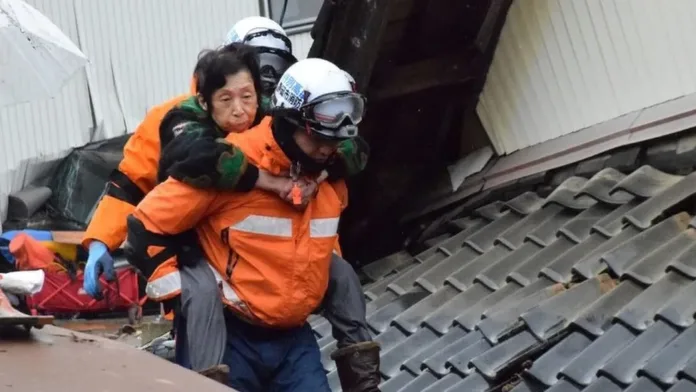Rescue workers in Japan are in a hurry to find people who are still alive after an earthquake on New Year’s. They are worried because the first three days after the earthquake are the most important for finding survivors.
At least 77 people died when a very strong earthquake hit a remote area called the Noto peninsula on Monday at 4:10pm local time (7:10am GMT).
Several people are believed to be stuck under their houses that have fallen down, mainly in the towns of Suzu and Wajima.
After 3 days, it is much less likely to find people alive.
Many people still don’t have electricity or running water, and some are stuck because of landslides and roads that are blocked.
Japan’s leader, Fumio Kishida, said on Thursday that 150 people have been saved and rescuers will keep working to save more.
This is a really tough situation. “But please try to save as many lives as possible by tonight, when the first 72 hours have passed,” he said, focusing on saving lives.
The earthquake on Monday hurt at least 330 people and was followed by more shaking. This information comes from the AFP news agency.
Over 30,000 people affected by the earthquake are still living in shelters. Some towns do not have water, electricity, or internet.
At the same time, exciting stories of lifesaving rescues have been spreading quickly on the internet. A video from Peace Winds Japan, a local group that helped in the rescue, shows people digging through broken furniture to save a woman stuck under her house. They put a big blanket around her.
The media saw a lot of damage in Wajima on Wednesday. Houses and cars were crushed under falling concrete.
The town has about 23,000 people, but most of them left when they were told a tsunami might come. Now, it looks empty like a ghost town.
However, it has recorded the highest number of deaths so far, with more than thirty confirmed deaths, but that number is likely to increase. Some areas of the town are still blocked by broken roads and landslides, making it difficult for help to reach people.
The mayor of Wajima, Shigeru Sakaguchi, said that only 2,000 out of 10,000 people who had to leave their homes have received food and other help.
The mayor of Suzu, a town with 13,000 people, said that almost all the houses there were destroyed. About 90% are totally or almost totally collapsed, according to Masuhiro Izumiya.
A small tsunami hit the town shortly after the big earthquake.
Japan has a lot of earthquakes, and there have been more earthquakes near Noto since the end of 2020. Over the last three years, there were over 500 small and medium earthquakes here.
